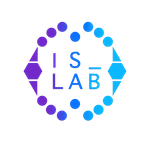E. Kontopoulos, N. Bassiliades, G. Antoniou, “Deploying Defeasible Logic Rule Bases for the Semantic Web”, Data and Knowledge Engineering, Elsevier, 66 (1), pp. 116-146, 2008.
Author(s): E. Kontopoulos, Nick Bassiliades, G. Antoniou
Appeared In: Data and Knowledge Engineering, Elsevier, 66 (1), pp. 116-146, 2008.
Keywords: Semantic Web, Reasoning, Defeasible Logic, Visual Representation, Rule Editor, Rule Markup Languages.
Tags:
Abstract: Logic is currently the target of the majority of the upcoming efforts towards the realization of the Semantic Web vision, namely making the content of the Web accessible not only to humans, as it is today, but to machines as well. Defeasible reasoning, a rule-based approach to reasoning with incomplete and conflicting information, is a powerful tool in many Semantic Web applications. Despite its strong mathematical background, logic, in general, and defeasible logic, in particular, may overload the user with tons of additional complex semantic relationships among data and metadata of the Semantic Web. To this end, a comprehensible, visual representation of these semantic relationships (rules) would help users understand them and make more use of them. This paper pre-sents VDR-DEVICE, a defeasible reasoning system, designed specifically for the Semantic Web environment. VDR-DEVICE is an integrated development envi-ronment for deploying and visualizing defeasible logic rule bases on top of RDF Schema ontologies. The system consists of a number of subcomponents, which, though developed autonomously, are combined efficiently, forming a flexible framework. The system employs a defeasible reasoning system that supports di-rect importing and processing of RDF data and RDF Schema ontologies as well as a number of user-friendly rule base and ontology visualization modules.
